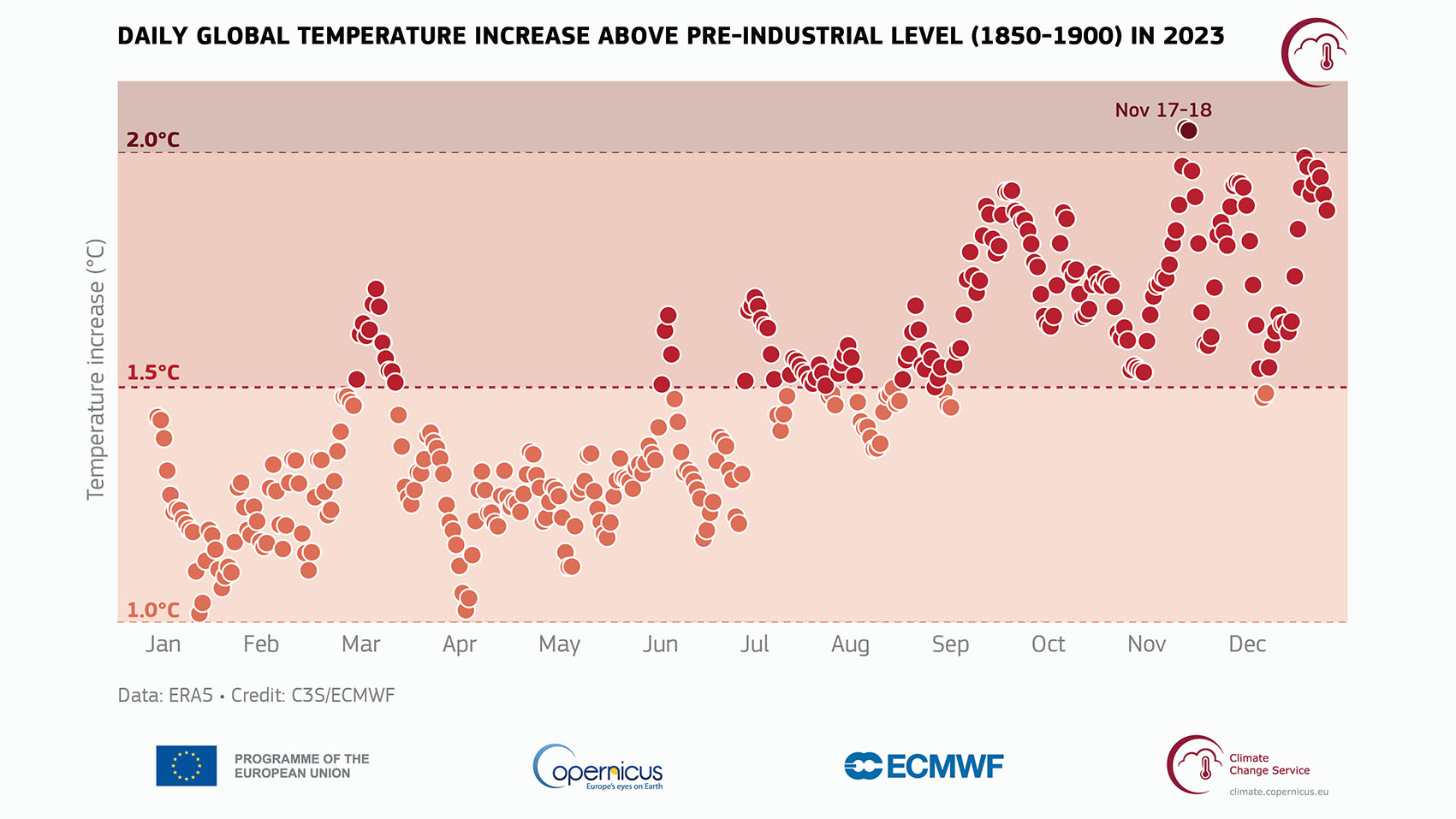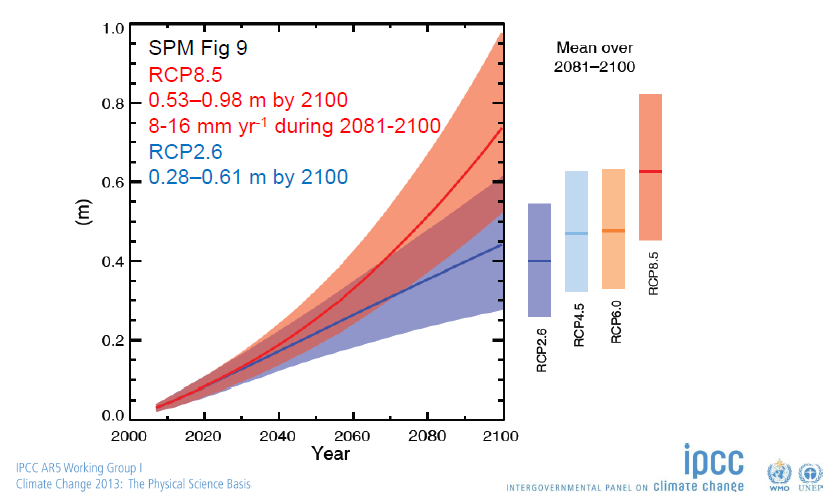Impacts: What will it cost us?
Image: Kasey McCoy
“Unchecked carbon pollution is forcing the globe’s most vulnerable on a frog march to destruction. The facts are undeniable. This abdication of leadership is criminal. The world’s biggest polluters are guilty of arson on our only home. It is essential to meet the goal of limiting global temperature rise to 1.5°C and science tells us that will require the world to cut emissions by 45% by 2030 and achieve net zero emissions of greenhouse gases by 2050. But according to current commitments, global emissions are set to increase almost 14% over the current decade. That spells catastrophe.” – António Guterres, Secretary-General of the United Nations introduction to the IPCC Sixth Assessment Report: Impacts, Adaptation and Vulnerability (2022)
Insurance
“Lloyd’s of London warns extreme weather could incur $5tr of economic losses over five years in the lowest severity scenario to $17.6tr in the most extreme scenario.” – Business Green, 2023

“With private insurers already retreating from areas with high risk and climate-related disasters predicted to become more frequent and severe, the ability of governments to pay for damages is uncertain. All of this leaves a question mark over the government’s role in providing compensation for economic losses from climate disasters.
“A billion-dollar flood and cyclone recovery package was announced through Budget23, targeting child mental health services, rebuilding and repairing infrastructure, training and employment, and future flood protection (New Zealand Government 2023). However, this funding is equivalent to 13% to 20% of the estimated damage to just publicly-owned infrastructure, let alone the wider impacts currently not included in the cost.” – New Zealand Institute of Economic Research, 2024

“We expect New Zealand’s all-hazards approach to insurance to change. Particular perils may be dropped first – so you may still have rain inundation insurance, but not insurance for damage connected to a storm surge. After that, properties are likely to lose insurance for climate hazards quickly. Our prediction is that if you live in a 1% AEP storm surge zone (where an event that previously had a 1% probability of occurring each year becomes a 5% probability) you are unlikely to retain insurance for the next twenty years..” – Deep South
“Tower has started flood-risk rating individual homes which will see some at higher risk of flooding being billed more for insurance. The launch of this model is aligned with Tower’s commitment to a sustainable future and being more open and transparent around insurance and risks associated with climate change.” – Tower insurance chief executive Blair Turnbull, November 2021 (Radio NZ)
Cumulative risks to businesses, jobs, and the econcomy
“As the effects of these changes become more frequent through flooding, coastal inundation and drought, we’ll have less time to recover and there will be cumulative consequences. In addition, as different sectors respond to the changes, there is potential for impacts to compound through the economy.” – Deep South
“Many large businesses in New Zealand do not currently have a good understanding of how climate change will impact what they do.” – Climate Change Minister James Shaw, 2020
“…humanity is running an ecological Ponzi scheme in which society robs nature and future generations to pay for boosting incomes in the short term (Ehrlich et al., 2012). Even the World Economic Forum, which is captive of dangerous greenwashing propaganda (Bakan, 2020), now recognizes biodiversity loss as one of the top threats to the global economy (World Economic Forum, 2020).” – Bradshaw et al, 2021
Fig. 4: Instructions for this interactive graph (Credit: The 2°
- Mouse over anywhere on the graph to see the changes in global temperatures over the last thousand years.
- To see details for time periods of your choice, hold your mouse button down on one section then drag the mouse across a few years, and release it.
- To see how this compares to the past 771,000 years, click on the ‘time’ icon on the top left.
- Compare this to rising global temperatures by clicking the planet/thermometer icon at the top left corner.
- To return the graph to its original position, double-click the time icon to the left of the thermometer/planet icon
Compounding risks to Aotearoa
“Key climate hazards in the natural environment domain include sea level rise, flooding, coastal erosion, fire, higher air temperature, drought, storms and wind, annual rainfall changes, reduced snow and ice, marine heatwaves, and changes in ocean chemistry. These hazards are likely to affect native terrestrial, freshwater, and marine biodiversity; ground and surface water availability and quality; water quality in marine, estuaries, harbours, lakes, and rivers; natural coastal habitats (such as dunes, estuaries, and rocky shores); coastal wetlands; lowland and coastal environments; mountain and hill country environments; alpine and high country environments; and terrestrial, freshwater, and marine pests and disease.” – Canterbury Climate Change Risk Screening Interim Report
Predicting the future
The Government has legislated to make climate-related disclosures mandatory for some organisations. The requirement applies to publicly listed companies and large insurers, banks, non-bank deposit takers and investment managers. This forces large financial organisations in New Zealand to disclose how exposed their business and investments are to climate change-related risk. This is a world-first financial strategy to force companies to protect themselves and their investors from stranded assets and the physical risks posed by climate change. It will also force them to divest investments in fossil-fuel related industries.
“New Zealand is…one of the most vulnerable economies in the world to the impact of natural disaster… Based on data going back to 1900, we can expect on average for natural disasters to cost this country just under 1% of its GDP in any year or about NZ$1.6 billion…Climate change will raise the risks by increasing both the intensity and frequency of weather-related events. This will be made more acute because most of New Zealand’s population is located in coastal areas and beside rivers… By 2050 about one million older New Zealanders will be living in areas vulnerable to severe flooding, coastal storm surges, land slips and wind storms.” – ICNZ, 2014
The current Climate Change Projections for New Zealand used by the Ministry for the Environment are based on the IPCC 5th Assessment Report, 2013. This assessment assumed the world would drastically reduce emissions and invent technologies that would capture carbon dioxide and store it back underground or recycle it as a form of fuel.
However, we have already passed 1.3°C of warming (Figs. 4 & 5). The last time Earth’s atmosphere contained the amount of carbon dioxide (CO2) present today (>400ppm)—2.6 to 5.3 million years ago—sea levels were 10 to 20m higher, global temperatures were an average 2°C to 3°C warmer, and Antarctica was a plant-covered oasis up to 14°C warmer.
Climate-related events have and continue to outpace the predictions: the ocean is warming faster than expected, the level of methane in the atmosphere is rising faster than expected, melting across the Antarctic and Greenland ice caps is far faster than expected, and temperatures reaching 45°C in Siberia melting permafrost are way faster than expected.
“Weather-related hazards have already cost the EQC $450 million in (inflation adjusted) payouts since the year 2000.” – Deep South
The list of ‘unprecedented’ and ‘faster than expected’ events continues to grow. Dangerous climate tipping points not factored into the 2015 Paris Agreement are now being breached.
The 2020 Ministry for the Environment National Climate Change Risk Assessment for New Zealand Arotakenga Tūraru mō te Huringa Āhuarangi o Āotearoa is a clear message that we are not immune to these shocks. This report uses the RCP8.5, the ‘worst case’ scenario with the understanding that:
“More extreme scenarios are possible, and the sensitivity of the climate system remains uncertain.”
It also offers a clearer understanding of the costs (Fig. 5). That, in turn, helps us understand what steps we can take to mitigate the risks and adapt to changes that are now unavoidable.
“The human enterprise is in potentially disastrous ‘overshoot’, exploiting the ecosphere beyond ecosystems’ regenerative capacity and filling natural waste sinks to overflowing. Economic behavior that was once ‘rational’ has become maladaptive. This situation is the inevitable outcome of humanity’s natural expansionist tendencies reinforced by ecologically vacuous growth-oriented ‘neoliberal’ economic theory.” – Rees, 2019
The Resource Management Act
The Resource Management Review panel found that our councils and laws are not equipped to deal with the complexities of climate change adaptation and managed retreat. The report recommends mandatory environment limits or ‘bottom lines’ for biophysical aspects of the environment including freshwater, coastal water, air, soil and habitats for indigenous species.
Existing problems with the RMA (specific to climate change) include:
- Insufficient focus on adapting to climate change and natural hazard risks
- Confusion between overlapping laws
- Capacity, capability and funding barriers
- No clear risk management framework
- Lack of clarity about which agencies are responsible
Review recommendations
- Establishing a Managed Retreat and Climate Change Adaptation Act
- Address issues of liability and compensation for managed retreat
- Establishing an adaptation fund for climate change risk reduction
- Giving district and city councils powers to snuff out existing land use rights where necessary to adapt to climate change or natural hazard risks. (Only regional councils can currently do that)
- Allowing land use conditions such as relocatable housing or limited tenure




